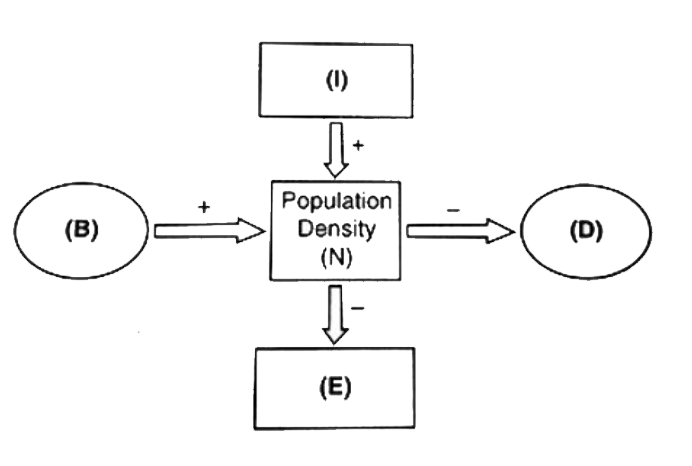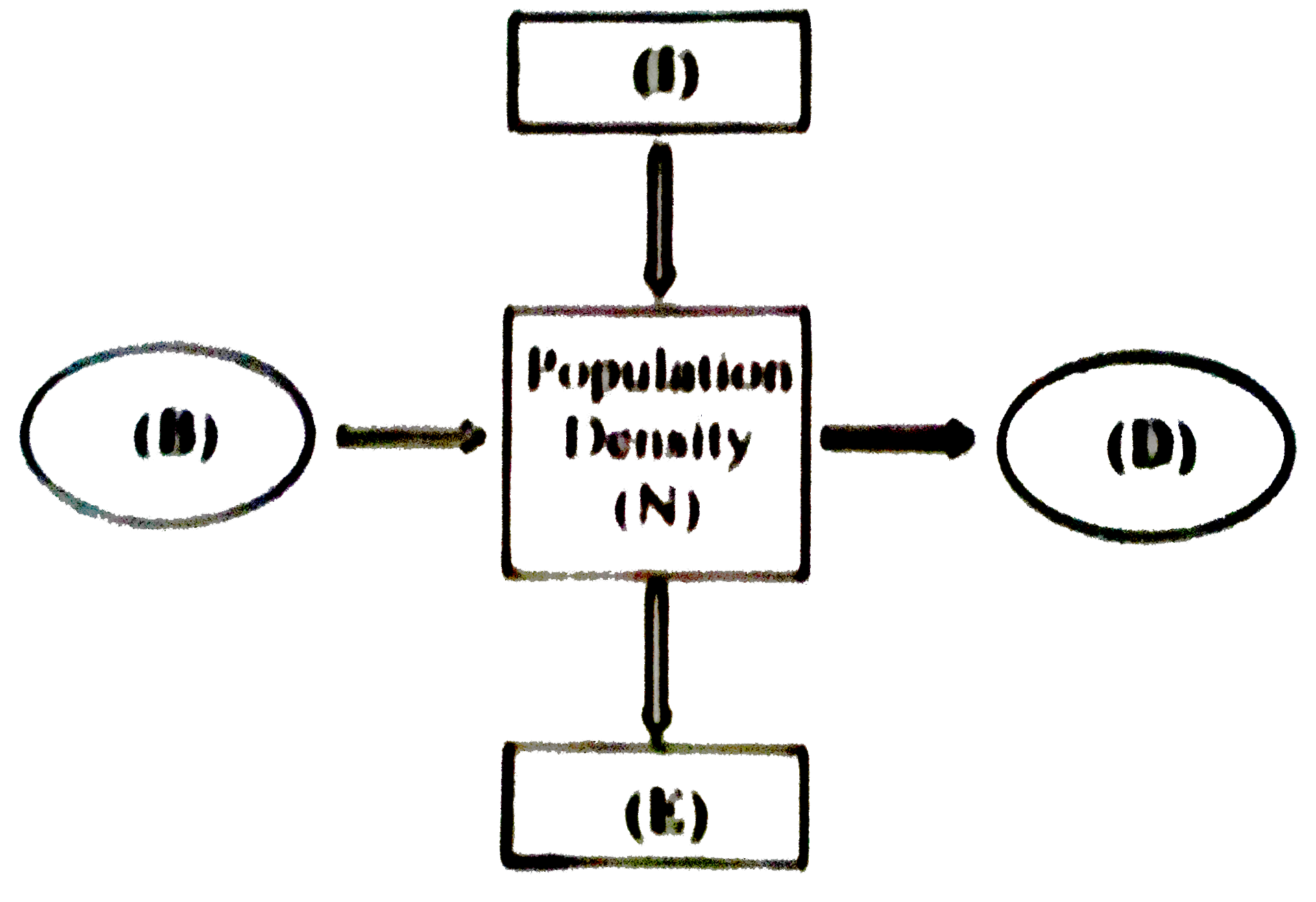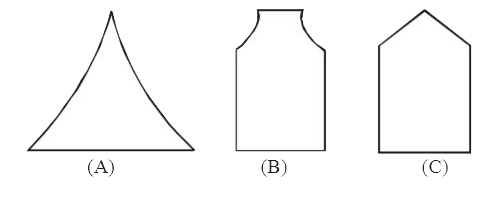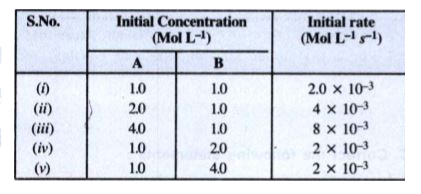Different factors affecting population density are given below . I ,B ,D and E represent :

I-Emigration , B-immigration , D-Natality , E-Mortality
I-Immigration , B-Natality , D-Mortality , E - Emigration
I-Immigration, B-Mortality , D-Natality , E-Emigration
I-Immigration, , B-Natality , D--Emigration, E-Mortality
The correct Answer is:B
Step by step video & image solution for Different factors affecting population density are given below . I ,B ,D and E represent : by Biology experts to help you in doubts & scoring excellent marks in Class 12 exams.
Updated on:21/07/2023Similar Questions
Discuss various factors that affect population size and density.
View Solution(a) List the different attributes that a population has and not an individual organism.
(b) What is population density? Explain any three different ways the population density can be measured with the help of an example each.
View Solution
Knowledge Check
The given figure represents different factors affecting population density (N). If B= natality D= mortality ,E=emigration and I= immigration, then select the incorrect option regarding these.
 AB and D are most influential factors under normal conditions while I and E become important in special conditionsBIn a new habitat just being colonised, I become more important than BCB and I cause positive changes in NDI is generaly equal to E
AB and D are most influential factors under normal conditions while I and E become important in special conditionsBIn a new habitat just being colonised, I become more important than BCB and I cause positive changes in NDI is generaly equal to EIf N= population density at time t, then population density at time t+1 can be written as. Nt+1=Nt+[(A+B)−(C+D)]. Select the correct option for A,B,C and D in the above equation.
AA can be mortality and B can be natalityBB can be immigration and C can be natalityCC can be mortality and D can be immigrationDA can be natality and D can be emigration.
Certain attributes of innate immunity are given in the table below. Identify A,B,C,D,E and F respectively in it.

View SolutionAge structure diagrams (A, B and C) for the populations are shown below. They represent:-

View SolutionConsider the reaction, A+B→C+D.
The initial rate for different initial concentrations of the reactants are given below :

What is the overall order ?
View SolutionConsider the reaction, A+B→C+D.
The initial rate for different initial concentrations of the reactants are given below :

What is the overall order ?
View SolutionConsider the reaction, A+B→C+D.
The initial rate for different initial concentrations of the reactants are given below :

What is the overall order ?
View SolutionGive the products of the reactions given below.
b.
c.
d.
e.
View Solution
